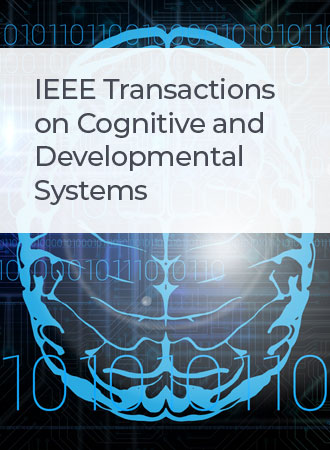Developmental Networks With Foveation
IF 4.9
3区 计算机科学
Q1 COMPUTER SCIENCE, ARTIFICIAL INTELLIGENCE
IEEE Transactions on Cognitive and Developmental Systems
Pub Date : 2024-11-05
DOI:10.1109/TCDS.2024.3492181
引用次数: 0
Abstract
The foveated nature of the human vision system (HVS) means the acuity on the retina peaks at the center of the fovea and gradually descends to the periphery with increasing eccentricity. Foveation is general-purpose, meaning the fovea is more often used than the periphery. Self-generated saccades dynamically project the fovea to different parts of the visual world so that the high-acuity fovea can process interested parts at different times. It is still unclear why biological vision uses foveation. This work is the first foveated neural network as far as we are aware, but it has a limited scope. We study two subjects here as follows. 1) We design a biological density of cones (BDOCs) foveation method for image warping to simulate a biologically plausible foveated retina using a commonly available uniform-pixel camera. 2) The subject of this article is not specific to tasks, but we choose a challenging task, visual navigation, as an example of quantitative and spatiotemporal tasks, and compare it with deep learning. Our experimental results showed that 1) the BDOC foveation is logically and visually correct; and 2) the developmental network (DN) performs better than deep learning in a surprising way and foveation helps both network types.用注视发展网络
人眼视觉系统(HVS)的焦点特性是指视网膜的敏锐度在中央凹中心达到峰值,并随着偏心距的增大逐渐下降到外围。中央凹是通用的,这意味着中央凹比外围凹更常被使用。自生成的扫视动态地将中央凹投射到视觉世界的不同部分,使得高灵敏度的中央凹可以在不同的时间处理感兴趣的部分。目前尚不清楚为什么生物视觉使用注视点。这项工作是我们所知的第一个注视点神经网络,但它的范围有限。我们在这里学习两个科目如下。1)我们设计了一种生物锥密度(BDOCs)注视点方法用于图像扭曲,以模拟生物上合理的注视点视网膜,使用常见的均匀像素相机。2)本文的主题并不具体到任务,但我们选择了一个具有挑战性的任务,视觉导航,作为定量和时空任务的一个例子,并将其与深度学习进行比较。实验结果表明:1)BDOC注视点在逻辑上和视觉上是正确的;2)发展性网络(DN)以一种令人惊讶的方式比深度学习表现得更好,注视点对两种网络类型都有帮助。
本文章由计算机程序翻译,如有差异,请以英文原文为准。
求助全文
约1分钟内获得全文
求助全文
来源期刊

IEEE Transactions on Cognitive and Developmental Systems
Computer Science-Software
CiteScore
7.20
自引率
10.00%
发文量
170
期刊介绍:
The IEEE Transactions on Cognitive and Developmental Systems (TCDS) focuses on advances in the study of development and cognition in natural (humans, animals) and artificial (robots, agents) systems. It welcomes contributions from multiple related disciplines including cognitive systems, cognitive robotics, developmental and epigenetic robotics, autonomous and evolutionary robotics, social structures, multi-agent and artificial life systems, computational neuroscience, and developmental psychology. Articles on theoretical, computational, application-oriented, and experimental studies as well as reviews in these areas are considered.
 求助内容:
求助内容: 应助结果提醒方式:
应助结果提醒方式:


